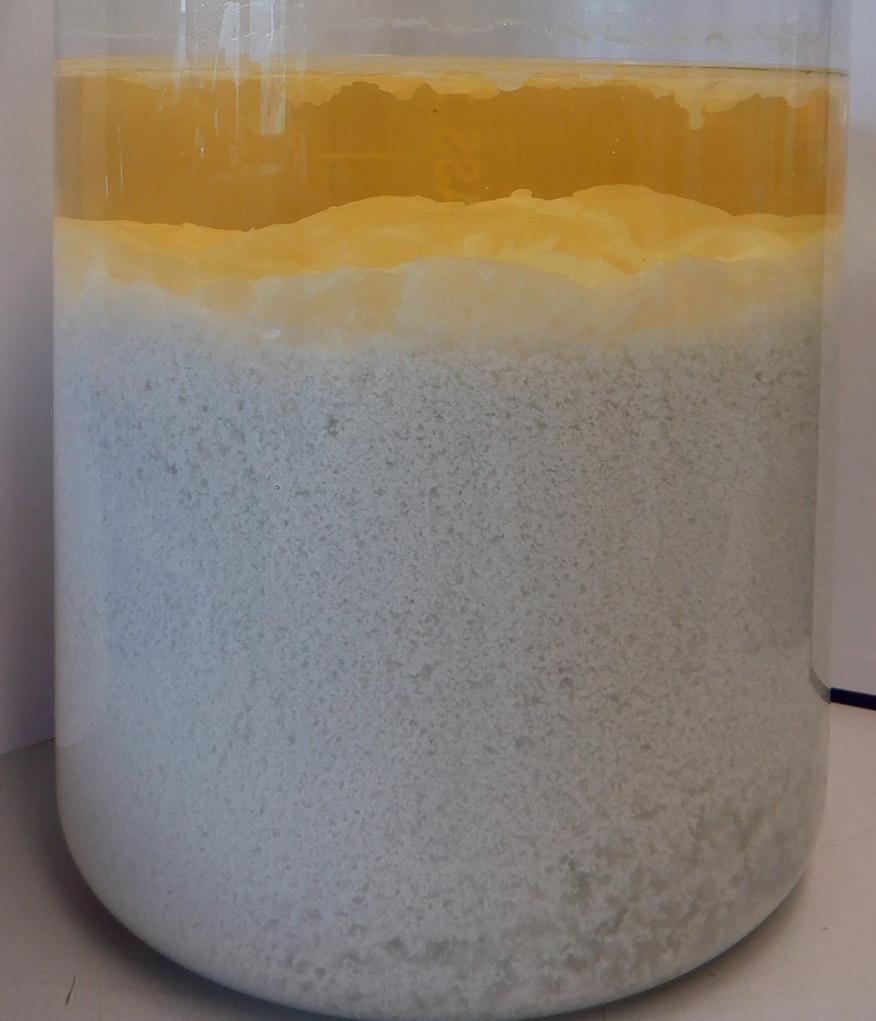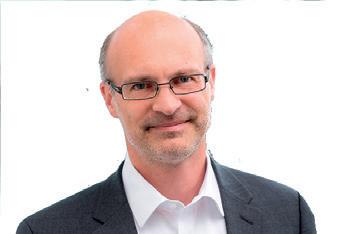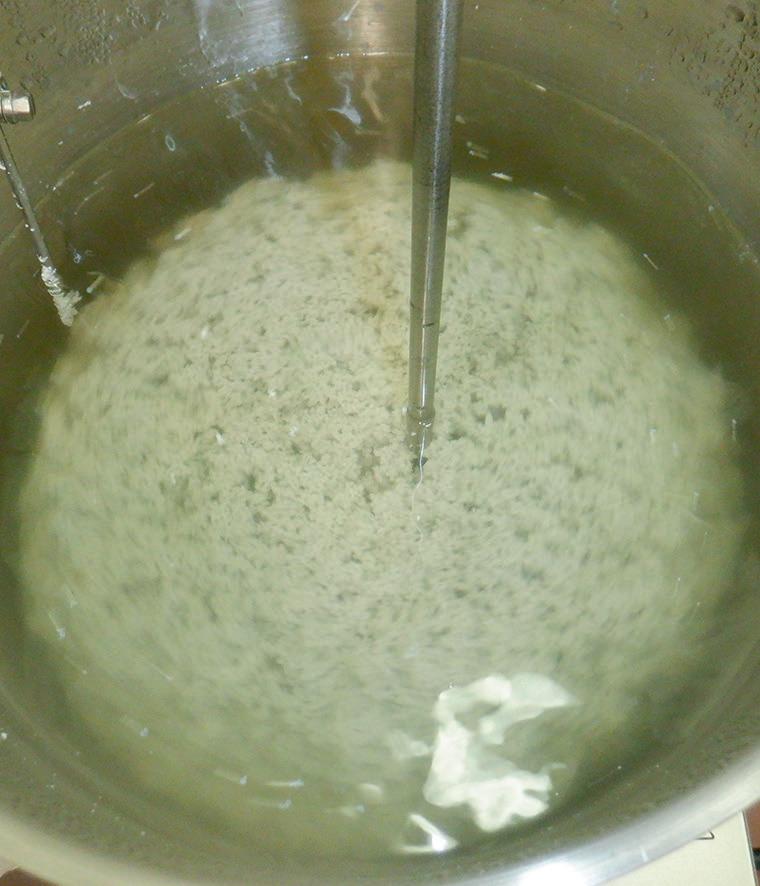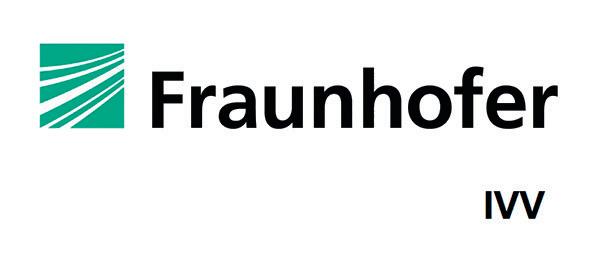A
step towards circular flooring
Polyvinyl chloride (PVC) is used in a wide range of applications, from flooring to artificial leather, but only a relatively small proportion is currently recycled. Researchers in the Circular Flooring project use the CreaSolv® Process to recover PVC from post-consumer waste flooring, enabling its eventual re-use in new products, as Thomas Diefenhardt and Dr. Martin Schlummer explain.
Polyvinyl chloride (PVC) is widely used in durable applications like window profiles or piping and therefore equipped with specific stabilizers. The addition of plasticizers to a PVC sheet gives it more flexibility, making it suitable for a variety of applications, for example in construction, transport and healthcare. However, some of the plasticizers or heavy metal stabilizers that were commonly used in the past cannot be used in recycled products after studies revealed that they might have adverse effects on living organisms, and their use is therefore restricted under the European Union’s REACH (Registration, Evaluation, Authorisation and Regulation of Chemicals) legislation. “They first have to be extracted from the PVC,” explains Thomas Diefenhardt, an Associate Scientist at the Fraunhofer Institute for Process Engineering and Packaging. Soft PVC containing these legacy plasticizers – specific phthalic acid di-esters – at concentrations of 1000 ppm or above may no longer be placed on the market. The issue, to bring increasing recycling rates and compliance with regulatory standards in line can only be faced via substantial purification of waste PVC states Diefenhardt, who addresses this topic with his colleagues in the Circular Flooring project. “We aim to find a solution to open up the possibility of recycling to currently unused PVC waste.


We are also working on methods of treating separated plasticizers so that they are no longer harmful,” he outlines.
Circular flooring
This research is targeted in particular at postconsumer flooring waste, with researchers investigating whether it can be treated effectively using the CreaSolv® Process. This process already works well on many other polymers, now Diefenhardt is looking to finetune it for use on post-consumer flooring waste. “We also want to see if after separation PVC and plasticizers can be post-processed separately and finally re-implemented into new flooring. Our aim is not only to treat the plasticizers, but also to re-implement them,” he says. Soft PVC as product material can be thought of as PVC polymer chains with multiple embedded additives in between the polymer chains. While some of the additives
need to be depleted, others still have a positive impact on the PVC’s function. “We mainly want to remove hazardous substances, so the plasticizers,” continues Diefenhardt. “We may want to retain some of the other additives in post-consumer flooring, because PVC converters say it is beneficial to keep some of them, since they would be added anyway.”
The aim of the project is not to strip everything down, but rather to take a more selective approach, resulting in a product that can then be useful in the commercial market. It is however important to remove the plasticizers, which have been identified as being of very high concern under the REACH legislation. “One of the most prominent legacy plasticizers is the organic compound DEHP for example, which was widely used in PVC flooring in the past,” says Dr. Martin Schlummer, the coordinator of the project. DEHP is now known to disrupt the endocrine system in the
body, so other plasticizers are now used. “One replacement for DEHP is DINCH, which is now accepted and is still on the market,” explains Dr. Schlummer. “Before DINCH is re-added to recycled PVC, however, the mixture of old plasticizers contained in waste soft PVC must be removed from the polymer.”
Waste PVC includes not just DEHP but also DIBP, DDP and BBP, all of which may have adverse effects on the endocrine system. The project’s overall agenda covers every stage from the separation of these plasticizers through to their eventual recycling into a new product. “Some of the partners are doing cost modelling work regarding the products we develop. We also consider the energy and material input,” outlines Diefenhardt. The focus of Diefenhardt’s work in the project however is the CreaSolv® Process, in which a highly selective solvent is used to dissolve the polymer. “We use a solvent that is specific for PVC. There might also be rubber and other materials in the input fraction, but we dissolve only the PVC and the associated additives,” he
in the project are also working to develop a hydrogenation process to deactivate the plasticizers, which opens up the possibility of recycling them, and the signs so far are very promising. “Our partner working on this has been able to achieve a high level of purity,” continues Dr. Schlummer. “This is a chemical process however, and it needs to be performed at fairly large scales. So that means that before you start treating plasticizer residues, you need to first have quite a high capacity for PVC recycling.”
The cost-effectiveness of the recycling process as a whole is an important factor in terms of the prospects of wider uptake. If the process can be applied on sufficient volumes of feedstock, then the cost of the recycled material will be highly competitive, and Dr. Schlummer says the hydrogenation process represents a way to make effective use of legacy plasticizers. “Otherwise they would just be incinerated. This is a route to make value and money out of them,” he points out. This research could have a wider environmental impact, reducing the

CIRCULAR FLOORING
New products from waste PVC flooring and safe end-of-life treatment of plasticisers
Project Objectives
CIRCULAR FLOORING aims to enable circular use of plasticised PVC (PVC-P) from waste flooring by developing recycling processes that eliminate plasticisers including hazardous phthalic acid esters (e.g.DEHP). We will demonstrate the project results via production of highquality recycled PVC, reprocessing of eliminated plasticisers to new phthalate-free plasticisers and re-use of recycled polymers and additives in new flooring applications.
Project Funding
This project has received funding from the European Union’s Horizon 2020 research and innovation programme under grant agreement no. 821366.

Project Partners
https://www.circular-flooring.eu/partners/

Contact Details
Jan-Hendrik Knoop, M. Sc.

Scientific Associate
Process development polymer recycling & decontamination



Fraunhofer-Institute for Process engineering and packaging IVV Giggenhauser Str. 35 85354 Freising, Germany


T: +49 8161 491-339
E: jan-hendrik.knoop@ivv.fraunhofer.de W: https://www.circular-flooring.eu/ W: www.ivv.fraunhofer.de
https://doi.org/10.1039/D1GC03864H
says. “It may be that around 60 percent of the input fraction is PVC, which we aim to recover from the PVC flooring waste.” There are several further steps in the CreaSolv® Process before the material can be reused in production, including cleaning, precipitation and drying. The final product reaches the standards required for reuse, says Dr. Schlummer. “All of the data that we have so far indicates that we can replace virgin PVC in flooring,” he says. Researchers
need to incinerate waste PVC and so bringing down CO2 emissions, while there is also interest from plasticizer manufacturers keen to work in a more sustainable way. “We are talking to the European Association of Plasticizer Manufacturers, and they are very interested in the project,” outlines Dr. Schlummer. “Recycling is a major issue for the industry today.”
An effective method of recovering waste products holds rich potential in these terms, and Dr. Schlummer and his colleagues are now exploring the possible practical application of their research. Each of the steps in the process have been defined and shown to be working well, and the next step is to demonstrate its economic and technical feasibility at higher scales. “We have the PVC extraction plant equipped. We have this demonstration capacity, so we can come from the lab into these production sites and produce higher volumes of samples,” says Dr. Schlummer. This can then provide a kind of blueprint for larger, commercial scale plants, with Dr. Schlummer looking to work with partners beyond the scope of the Circular Flooring project. “We have contacts in Asia and North America for example, and we hope also that these bilateral projects could lead to commercial-scale plants,” he says.
Dr. Martin Schlummer is Senior Scientist in the Department of Process Development for Polymer Recycling at Fraunhofer IVV, where he has been a research fellow since 1999. He has coordinated more than 30 national and international research projects and (co-)authored more than 62 publications in peer reviewed scientific journals. Thomas Diefenhardt is a scientist in the field of plastic recycling at Fraunhofer IVV. He is conducting research in extracting hazardous additives from plastics and performs lab- and technical-scale experiments.

We aim to find a solution to open up the possibility of recycling to currently unused PVC waste. We are also working on methods of treating separated plasticizers so that they are no longer harmful.Dr. Martin Schlummer Thomas Diefenhardt Flooring waste input sample. PVC after precipitation. Dried PVC product. PVC cleaning.
